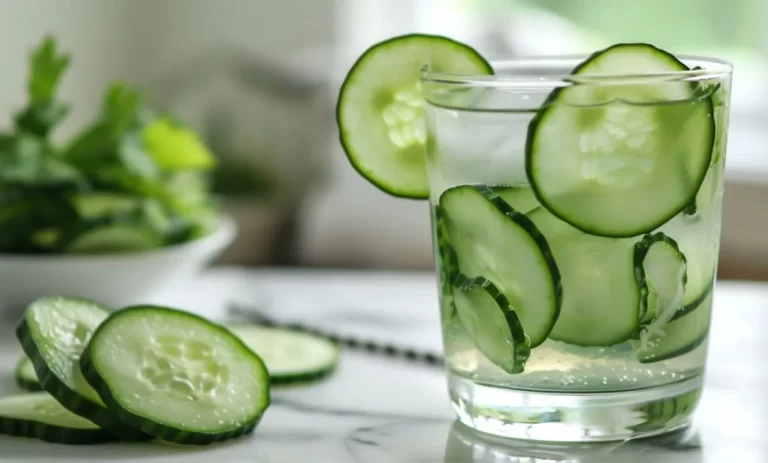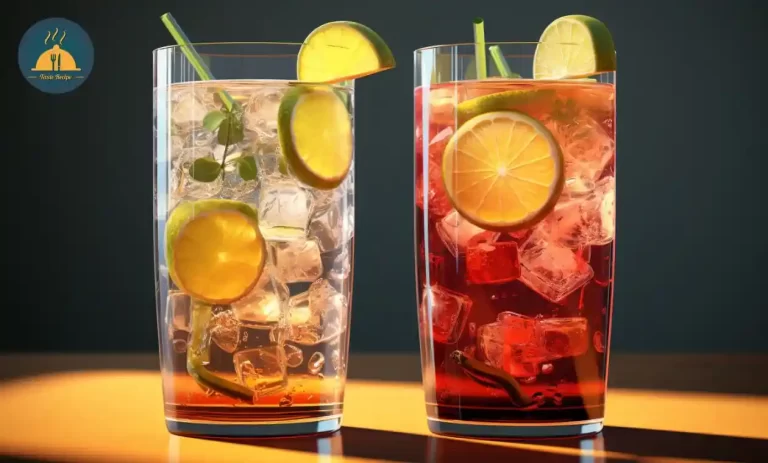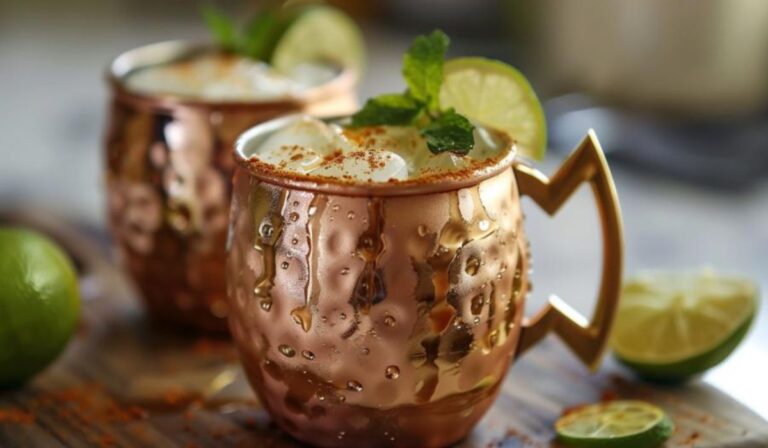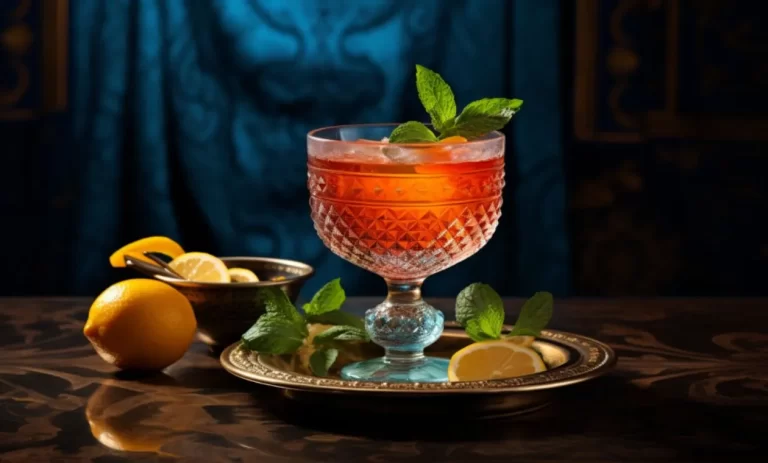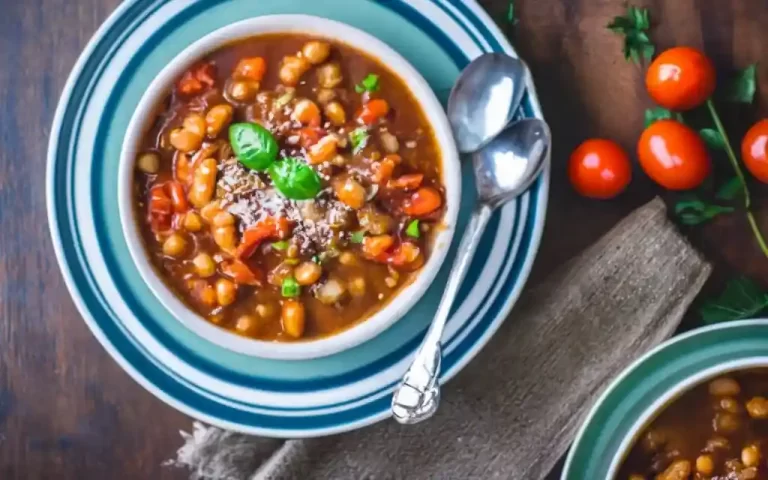Homemade Sangria: A Refreshing Recipe
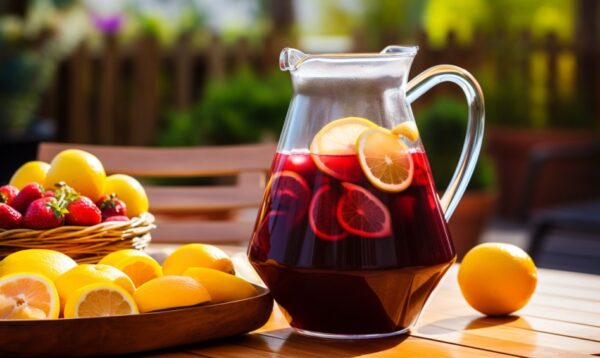
Sangria, a delightful beverage ideal for sharing with loved ones, has its roots deeply embedded in the rich cultures of Spain and Portugal. Let’s delve into the essence of this wine-based punch and explore the distinctive characteristics of red and white sangria.
Sangria, derived from the Spanish word for “blood,” captures the vivid and robust flavors of its ingredients. It’s not just a drink; it’s an experience—a refreshing journey of taste and tradition.
Hailing from the Iberian Peninsula, sangria has become a symbol of conviviality in Spanish and Portuguese cultures. The centuries-old tradition of crafting and sharing sangria has transcended borders, making it a global favorite.
Red Sangria: Typically made with a dry red wine like Rioja, red sangria boasts a bold and fruity profile. Chopped oranges, apples, peaches, berries, and a touch of brandy or liqueur contribute to its luscious character.
White Sangria: Featuring a dry white wine such as Sauvignon Blanc or Verdejo, white sangria offers a lighter alternative. With peaches, pears, and a variety of white fruits, it embodies a crisp and refreshing taste.
Embark on this journey with us as we uncover the secrets behind crafting the perfect sangria, exploring its nuances and the joy it brings to gatherings.
Red Sangria Recipe
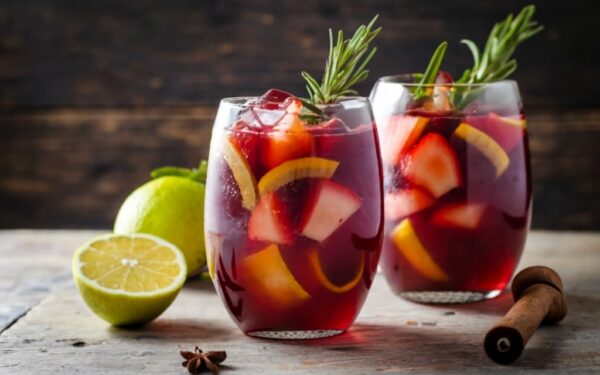
Embark on the culinary adventure of crafting a delightful batch of red sangria. Follow this step-by-step guide to create a beverage that captures the essence of tradition and flavor:
Ingredients
- 1 (750 milliliter) bottle of dry red wine (e.g., Rioja)
- ½ cup of brandy
- ½ cup of Triple Sec
- ⅓ cup of lemonade concentrate (frozen)
- ⅓ cup of orange juice
- ¼ cup of lemon juice
- ¼ cup of white sugar
- 1 medium orange, sliced into rounds
- 1 medium lemon, sliced into rounds
- 1 medium lime, sliced into rounds
- 8 maraschino cherries
- 2 cups of carbonated water
Recipe:
- In a large pitcher or bowl, combine the dry red wine, brandy, Triple Sec, lemonade concentrate, orange juice, lemon juice, and white sugar. Stir until the sugar dissolves, ensuring a well-blended mixture.
- Add the sliced orange, lemon, lime, and maraschino cherries to the pitcher. Gently stir to combine, allowing the fruits to infuse their flavors into the sangria.
- Cover the pitcher and refrigerate for a minimum of 2 hours, or for a more robust flavor, let it chill overnight. This patience will be rewarded with a richer and more harmonious sangria.
- When ready to serve, add the carbonated water to the sangria. Gently stir to combine, maintaining the effervescence of the drink.
Refrigeration and Serving Tips
- Refrigerate the sangria for at least a few hours to ensure it’s refreshingly chilled. For the best results, allow it to chill overnight, allowing the flavors to meld and intensify.
- Serve the red sangria over ice, garnished with fresh fruit slices for a visually appealing presentation. Consider using a clay pitcher (jarra) to enhance the authenticity of the serving experience.
Experience the joy of crafting and savoring this red sangria recipe, celebrating the fusion of flavors that makes it a timeless and cherished beverage.
White Sangria Recipe

Ingredients:
- 1 (750 milliliter) bottle of dry white wine (e.g., Sauvignon Blanc or Verdejo)
- 1/2 medium apple (cored, skin on, chopped into small pieces)
- 1/2 medium pear (cored, skin on, chopped into small pieces)
- 1/2 cup green grapes (halved)
- 3 tablespoons honey (or adjust to taste)
- 1/4 cup brandy
- 1 cup white grape juice
- 1 medium lemon (sliced into rounds)
- 1 medium lime (sliced into rounds)
- 2 cups sparkling water or club soda
- Ice cubes (for serving)
Instructions:
- In a large pitcher, combine the dry white wine, chopped apple, chopped pear, and halved green grapes.
- Add honey to the mixture, adjusting the sweetness according to your taste preference.
- Pour in the brandy and white grape juice, stirring gently to ensure all ingredients are well combined.
- Introduce the sliced lemon and lime to the pitcher, allowing the citrus flavors to infuse.
- Cover the pitcher and refrigerate for at least 2 hours or overnight to enhance the melding of flavors.
- When ready to serve, add the sparkling water or club soda. Stir gently to incorporate the effervescence.
- Serve the white sangria over ice in individual glasses, ensuring each serving includes a variety of fruit slices.
- Garnish with additional citrus slices if desired.
Enjoy this easy and refreshing white sangria, perfect for warm days and gatherings with friends. Cheers to the crisp and fruity delights of this classic beverage!
Key Ingredients
Crafting the perfect sangria hinges on selecting the right ingredients. Let’s break down the essentials that make this beverage a symphony of flavors:
- For the rich and robust notes of red sangria, opt for a dry red wine like Rioja. Its deep undertones complement the medley of fruits and liqueurs, creating a harmonious blend.
- If a lighter, crisper profile is your preference, choose a dry white wine such as Sauvignon Blanc or Verdejo for white sangria. Its refreshing qualities serve as the perfect canvas for a variety of fruits.
- Oranges, apples, peaches, berries, and melons are the stars of the sangria fruit ensemble. These vibrant additions bring sweetness, tartness, and a burst of freshness to each sip, creating a delightful sensory experience.
- Elevate the complexity of red sangria with the addition of brandy, offering depth and a subtle warmth. Alternatively, Triple Sec or Cointreau introduces a citrusy twist, enhancing the overall flavor profile.
- Achieve the ideal level of sweetness by experimenting with simple syrup, sugar, or honey. These sweeteners not only balance the acidity but also allow you to tailor the sangria to your taste preferences.
Mastering the art of sangria begins with a thoughtful selection of these key ingredients. Join us as we explore the interplay of flavors and unveil the secrets behind a well-crafted sangria recipe.
Making Sangria
Creating the perfect sangria is not just a task; it’s an enjoyable process that you can master in the comfort of your own home. Let’s dive into the simple steps, emphasizing the importance of patience and the magic of letting flavors meld:
Begin by gathering your chosen wine, fruits, liqueurs, and sweeteners. A good sangria is a reflection of quality ingredients.
- In a spacious pitcher or bowl, combine the red or white wine, brandy or liqueur, lemonade concentrate, orange juice, lemon juice, and the chosen sweetener. Stir the mixture thoroughly until the sugar completely dissolves, setting the stage for a symphony of flavors.
- Now comes the fun part – add the sliced oranges, lemons, limes, and a handful of maraschino cherries. These fruits will infuse the sangria with their unique notes, adding both visual appeal and depth of taste.
- Patience is key. Allow the concoction to rest, giving time for the flavors to meld and intensify. This resting period allows the fruits to impart their essence into the mixture, resulting in a harmonious blend of tastes.
- While it may be tempting to rush, resist the urge. The longer the sangria rests, the more complex and delightful the final product will be. Aim for a minimum of 2 hours in the refrigerator, or for an even richer experience, let it chill overnight.
- Chilling is the final touch that transforms a mixture of ingredients into a refreshing elixir. For the best results, refrigerate the sangria for at least a few hours. This not only enhances the overall flavor but also ensures your beverage is served at the perfect temperature.
Join us in this journey of creating a homemade sangria that not only refreshes but also brings people together, celebrating the art of simplicity and patience in crafting a delightful beverage.
Variations
Sangria, a canvas for creativity, offers delightful variations that cater to diverse tastes. Let’s explore these enticing twists that add a unique flair to the classic recipe:
Sparkling Sangria
Elevate your sangria experience by adding a splash of sparkling water or club soda. This effervescent touch introduces a playful element, making each sip a bubbly sensation. Perfect for those who enjoy a bit of fizz in their beverage.
White Sangria
For a lighter, fruit-forward alternative, delve into the world of white sangria. Crafted with a dry white wine as the base, such as Sauvignon Blanc or Verdejo, this version features peaches and pears. The result is a crisp and refreshing concoction that showcases the brighter side of sangria.
Non-Alcoholic Sangria
Embrace the spirit of sangria without the alcohol. This variation replaces the traditional wine and liqueurs with sparkling water or grape juice, offering a family-friendly option or catering to those who prefer a non-alcoholic beverage. The medley of fruits still takes center stage, ensuring a burst of flavor in every sip.
Dive into the world of sangria variations and discover the endless possibilities that suit your preferences. Whether you prefer the classic richness, the effervescence of sparkling sangria, the lightness of white sangria, or a non-alcoholic option, there’s a sangria variation for every occasion.
Serving Suggestions
Now that your exquisite sangria is ready to delight the senses, let’s explore the best ways to serve and enjoy this captivating beverage:
The ideal serving temperature for sangria is chilled, providing a refreshing contrast to warm days. Pour it over ice to intensify the coolness and enhance the overall experience. As a final touch, garnish your glass with fresh fruit slices—adding visual appeal and an extra burst of flavor.
Sangria is a versatile companion for various occasions. Whether you’re hosting a lively party, enjoying a leisurely picnic, gathering for a brunch with friends, or simply relishing a warm day, sangria is the perfect beverage to elevate the mood and bring people together.
As you savor your expertly crafted sangria, consider the setting and the company, allowing the convivial spirit of this delightful beverage to enhance every moment. Cheers to creating memories and sharing joy with a glass of perfectly served sangria!
Additional Information
Uncover the fascinating details that add depth to the rich tapestry of sangria. Beyond the recipe itself, these insights provide context to its cultural significance and global appeal:
Embrace tradition by serving your sangria in a clay pitcher, known as a “jarra” in Spain. This timeless vessel not only adds a touch of authenticity to the experience but also keeps the sangria cool, enhancing the overall presentation.
The name “sangria” has linguistic roots in the Spanish language, derived from the word for “blood.” This nomenclature, likely inspired by the deep red hue of the drink, reflects the vibrancy and energy encapsulated in every sip.
Sangria isn’t confined to the Iberian Peninsula; it has transcended borders to become a beloved beverage globally. Spain and Portugal cherish it as a cultural icon, while its popularity has soared worldwide, making it a go-to choice for those seeking a flavorful and communal drink.
Delve into the cultural and linguistic nuances that surround sangria, and gain a deeper appreciation for this versatile libation that bridges traditions and brings people together across the globe.
In Crux
As we conclude our exploration of the world of sangria, we invite you to embark on your own creative journey with this beloved beverage. The beauty of sangria lies not only in its rich tradition but also in its adaptability to personal tastes.
As you delve into the world of sangria, savor the moments it brings—whether it’s the joy of crafting your own recipe, sharing a pitcher with friends, or simply indulging in a quiet moment with a glass in hand. Here’s to the vibrant flavors, the traditions, and the enduring appeal of sangria—may it continue to enhance your gatherings and create lasting memories. Cheers!

